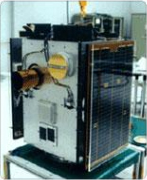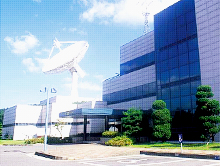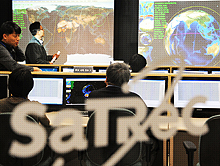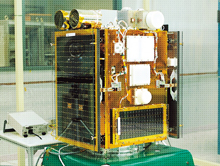Home > Research and Development > KITSAT Series > KITSAT-3

∎ KITSAT-3
Launched on May 26, 1999, KITSAT-3 was the first independently designed Korean satellite with a unique system developed by SaTReC, building on the experience gained from the KITSAT-1 and KITSAT-2 projects. It demonstrated performance on par with leading small satellites developed in more advanced nations, drawing global attention.
KITSAT-3 took Earth images of various parts of the world in full color and conducted high energy particle detection and electron temperature measurement experiments to observe changes in the space environment. It also verified the space performance of domestically manufactured semiconductors.
The successful launch and operation of KITSAT-3 holds great meaning as Korean researchers independently developed and verified core space technologies in real missions.
- To develop a unique 3-axis attitude stabilized small satellite system
- To develop a high resolution (13M) Multispectral Earth Imaging System (MEIS)
- To observe changes in the space environment according to solar activity
- Space verification of domestically produced components such the large capacity memory system
|
| Orbit |
730 km circular sun-synchronous orbit |
| Size |
495x604x852 mm |
| Weight |
~ 110 kg |
| Power Rating |
Max. 180 W |
| Attitude Control Method |
3-axis stabilization, magnetic torquer, < 0.5 deg pointing accuracy |
Communication
(Transfer Speed) |
VHF-band Uplink (148 MHz frequency band): 9600bps
UHF band Downlink (401 MHz frequency band): 9600bps
X-band transmitter: 3.3 Mbps
|
| Main Computer |
KASCOM(80960) |
| Payloads |
Multispectral Earth Imaging System (MEIS)
15M resolution, 3 channels, linear CCD camera
Space ENvironment Scientific Experiment (SENSE)
Radiation Effect on Micro-Electronics (REME)
High Energy Particle Telescope (HEPT)
Scientific Magnetometer (SMAG)
Electron Temperature Probe (ETP)
|






